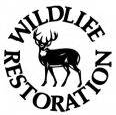
Texas Wildlife Research Program
Pittman-Robertson Grant Highlights
Each year, the TPWD Wildlife Research Grants program awards between $1 and $2 million in federal Pittman-Robertson Act funds for research on Texas’ native wild birds and mammals. This process starts with an annual review by Wildlife Division staff to identify our current, greatest research needs for managing these species. Based on that review process, we then post requests for proposals online for those research needs, and the Wildlife Division follows a competitive review process to award project proposals submitted by qualified Universities or non-governmental organizations. Below are the highlights of projects awarded over the last 5 annual funding cycles of the program (from fiscal year 2019 onward).
Fiscal Year 2023
Distribution, Ecology and Genomics of Montezuma Quail: Implications for Conservation
Principal Investigators: J. Andrew DeWoody - Purdue University
Alberto Macías-Duarte - Universidad Estatal de Sonora
TPWD Project Coordinator: John McLaughlin
Status: In Progress
Project Summary: Montezuma quail are the least understood of Texas’ four quail species. Persisting at the periphery of their core range in Mexico. Texas populations are restricted to the Trans-Pecos and Edwards Plateau ecological regions. Range contraction over the past century has resulted from land use changes, incompatible grazing practices and fire suppression, which have led to reductions in native grass cover and forage resources and facilitated the expansion of woody plant species (e.g., juniper, cedar). Shifts in vegetation communities have reduced habitat connectivity and isolated populations within Texas, making them vulnerable to extirpation.
Recently, there have been concerns regarding reduced genetic diversity in Texas populations. Sampling Montezuma quail populations in Arizona, New Mexico and Texas, researchers previously observed that Texas birds appeared to be genetically isolated and were exhibiting signs of genetic erosion. In addition, Texas populations had low genomic diversity and showed high levels of inbreeding, suggesting the adaptive potential of these small, isolated populations may be limited. To address this problem, a multidisciplinary team is currently conducting research in the Edwards Plateau of Texas and in Mexico to estimate genetic diversity and uniqueness of the Montezuma quail populations across their range. In the long term, these studies will provide information on the feasibility of using translocations (e.g., moving wild birds from a healthy population to supplement or restore declining populations) as a restoration tool for the Montezuma quail across its historic range in Texas, and information to develop best management practices for maintaining suitable habitat for private landowners.
As of May 2023, ~150 birds had been collected in Mexico and 8 in Texas, complementing the nearly 200 birds collected in previous studies throughout the southwestern US. Using samples from across their range, biologists will be able to take their first steps in understanding, genetically, what is happening to central Texas populations. Long-term, a combination of habitat work and translocations may be appropriate to restore numbers and genetic diversity. Work is scheduled to continue through 2024.
Landscape Assessment of Wild Turkey Roosting Habitat in the Texas Rolling Plains
Principal Investigators: Stephen L. Webb and Roel R. Lopez - Texas A&M University
TPWD Project Coordinator: Jason B. Hardin
Status: In Progress
Project Summary: Rio Grande wild turkey populations rely on roosting sites to reduce predation, and in more arid regions, such as the Rolling Plains, roost sites (in general) and preferred tree species (mature cottonwoods) may be restricted in distribution to riparian corridors. However, cottonwood regeneration has declined within riparian areas of the Rolling Plains. Additionally, increased brush encroachment of roost understory is occurring across historic roosting areas for Rio Grande wild turkeys in the Rolling Plains of Texas. As Rio Grande wild turkeys frequently select roosting locations with little understory growth (i.e., shrubs) beneath roost trees, understory vegetation change due to lack of management, droughts, or plant composition changes can render roost locations unusable.
Our objective is to predict and assess changes to roost habitat across the Rolling Plains while, at the same time, developing a reproducible method for identifying and prioritizing roosting habitat of wild turkeys in other regions of Texas. For the period 2000 to 2022, we will describe wild turkey roosting habitat across the Rolling Plains using a data-driven, habitat selection analysis based on available Rio Grande wild turkey roost site locations. Using the habitat selection model for roost habitat, we will predict and map when and where available roosting habitat is increasing, decreasing, stable or transitioning over four discrete periods separated by ~6 years (e.g., 2004, 2010, 2016 and 2022). We also will validate roosting habitat models to help ensure accuracy and scalability of the vegetation features providing roosting habitat. Last, we will characterize the predominant vegetation communities that are components of wild turkey roosting habitat and how vegetation across the landscape has changed in composition and distribution over time (from 2000 to 2022), which ultimately influences roost availability.
Fiscal Year 2022
2019 to 2022 highlights coming soon ...